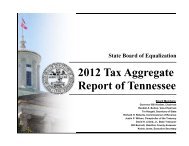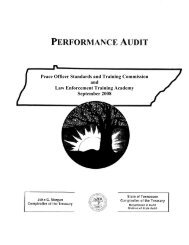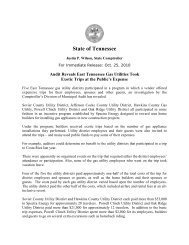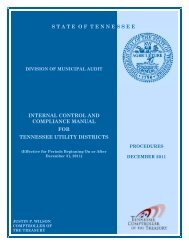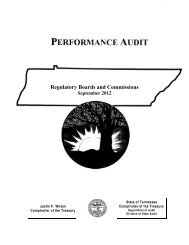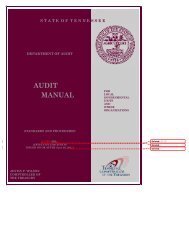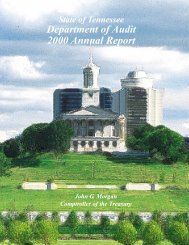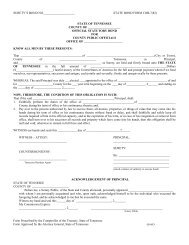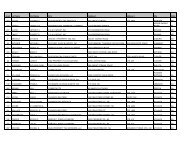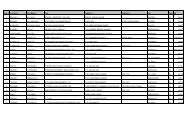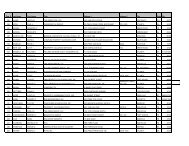On 06/30/2013 the Audit Manual was updated. For a markup copy ...
On 06/30/2013 the Audit Manual was updated. For a markup copy ...
On 06/30/2013 the Audit Manual was updated. For a markup copy ...
You also want an ePaper? Increase the reach of your titles
YUMPU automatically turns print PDFs into web optimized ePapers that Google loves.
<strong>Audit</strong> Procedures – Section APP.C<br />
2. Determine that “collection procedures” submitted annually to <strong>the</strong> Tennessee Department<br />
of Education are implemented properly. <strong>Audit</strong>ors should determine that an actual meal<br />
count for reimbursable meals is taken at <strong>the</strong> point of service. Determine that<br />
reimbursable meal counts are accurate and that supplemental sales (a la carte) are not<br />
included in <strong>the</strong> reimbursable meal counts. Verify that <strong>the</strong> procedures established are in<br />
effect.<br />
3. If <strong>the</strong> individual school maintains a bank account for cafeteria funds, perform standard<br />
bank account reconciliation procedures and confirm balances as of June <strong>30</strong> by written<br />
communication or o<strong>the</strong>r available documentation.<br />
4. <strong>On</strong> a sample basis, foot and extend daily collection reports, if <strong>the</strong> reports are prepared<br />
manually. Investigate any differences noted.<br />
5. If collections are made in <strong>the</strong> classroom, trace classroom teacher reports on a sample<br />
basis to amounts reported on daily collection reports of <strong>the</strong> cafeteria manager.<br />
Investigate any differences noted.<br />
6. Review frequency of bank deposits, and determine compliance with <strong>the</strong> three-day<br />
deposit requirement. Compare bank deposits with cash collections on a monthly basis.<br />
Investigate any differences noted. If deposits are made directly to an outside bank<br />
account, such as <strong>the</strong> county trustee's account, it will be necessary to trace to those<br />
records.<br />
7. <strong>For</strong> <strong>the</strong> whole year, prepare a schedule of receipts by source from collection reports.<br />
Trace cash collections per <strong>the</strong>se schedules to cash receipt records of <strong>the</strong> centralized<br />
cafeteria fund. Investigate any differences noted.<br />
8. Review collection reports for <strong>the</strong> manner of recording number of children served by<br />
meal (lunch, breakfast, and snack) according to eligibility (free, reduced, full pay) to<br />
determine if <strong>the</strong>se numbers are used in <strong>the</strong> report that is consolidated at <strong>the</strong> central office<br />
level and <strong>the</strong>n submitted to <strong>the</strong> state as part of <strong>the</strong> monthly Claim for Reimbursement.<br />
9. Check <strong>the</strong> approved applications to ensure that <strong>the</strong>re are a sufficient number on hand to<br />
support <strong>the</strong> reported free and reduced-price meals served. (Note: Applications may<br />
contain <strong>the</strong> name of more than one child.)<br />
10. The cafeteria system is required by USDA to verify a percentage of free and reducedprice<br />
applications. Review <strong>the</strong> procedures used by <strong>the</strong> system and determine that <strong>the</strong><br />
system maintains <strong>the</strong> records required to document its verification procedure as follows:<br />
a. Summary of verification efforts (to include total number of applications on file<br />
October 1 and <strong>the</strong> percentage or number of applications verified)<br />
b. Copies of all correspondence with <strong>the</strong> household selected<br />
c. Documentation or proof of benefit eligibility<br />
APP.C-2



